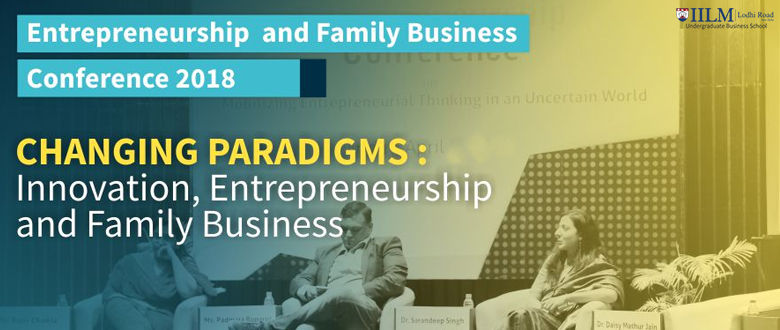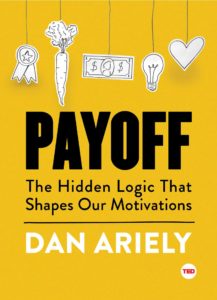IILM institute for Higher Education organized the Fourth Annual Entrepreneurship and Family Business Conference on 6th April 2018 at its Lodhi Road Campus. The conference was centered on the theme “Changing Paradigms: Innovation, Entrepreneurship and Family Business”. This conference aimed to explore the importance of innovation and sustainability for an entrepreneur and associated opportunities and risks. The conference also uncovered the key challenges faced by Family Businesses in high potential economies such as India in the era of digitization and the need for digital transformation for sustenance. The Conference was structured around three key sessions.
The conference began with the welcome remarks by Dr. Daisy Mathur Jain, Dean IILM-UBS. In her welcome address Dr. Daisy gave an overview of the Entrepreneurship focus at IILM with special focus on opportunities that students get to gain experience and hone their skills. She also spoke about the various international affiliations IILM has with Universities across the globe. IILM is also affiliated with the Family Firm Institute (FFI), Boston. This year, IILM is also introducing an M.Sc. in Family Business as a post graduate specialization in partnership with SBS Swiss Business School, Switzerland.
The Inaugural session comprised a keynote session by Ms. Sonu Bhasin, Founder, Families and Business, highlighted that family businesses are the unsung heroes of the Indian economy by citing interesting figures to support her claim. She fervently held that Entrepreneurship is a state of mind and an ability to get things done, using the analogy of a line black ants and the flow of water. She also underlines that failure does not stop entrepreneurs, rather it eggs them on, because they believe in their purpose. She added that it is important to remember and keep the focus on the family values for a family business to succeed and remain successful. She ended on a positive note that today the time is right to start and entrepreneurship because digitization has reduced capital requirements, technology is an enabler that has opened a plethora of opportunities to this generation that earlier ones did not have access to. She urged the youngsters to go ahead and start something new.
The first plenary sessionwas entitled “Entrepreneurship, Innovation and Sustainability”wherein Ms. Guneesha Kohli, Business Head Malika International, Mr. Sameer Talwar, Founder Entrepreneur of Excellence, Mr. Raman Talwar, Founder Simulanis and Mr. Rijul Bajaj, Co-founder Samshek Foundation shared their insights. The speakers emphasized that innovation is nothing but challenging every assumption and reinventing what you do to make it faster, more efficient and better. Each of them, through personal examples, underscored the need to be open to failures, to learn from them, to stand up once again and to not give up on the dreams.
The second plenary session on the topic “Digital Transformation of Family Business Firms” was also the closing plenary. Mr. Virendra Teotia, Owner Umrao Hotels, Mr. Ridhay Khanna, Owner, HH Global and Mr. Aviral Aggarwal, Director Bikanerwala, shared their experience and paved the possible way forward.Each of them spoke about the role that technology and digitization plays in reducing costs in massive ways for marketing and for reach, for building customer relationship and branding. They also underlined the need to be flexible and adapt to technological change by transforming business and the way it is run.
Active participation from students and faculty made the conference a great success.Itprovided an opportunity for students and faculty to engage with and listen to new ideas and experiences from distinguished speakers and also to network with established entrepreneurs and investors.





